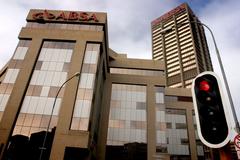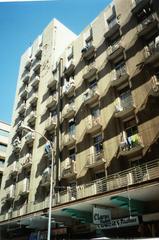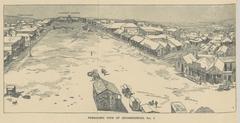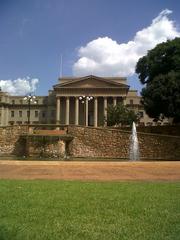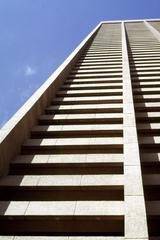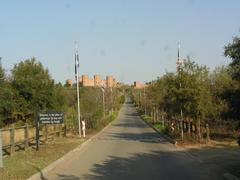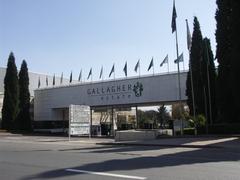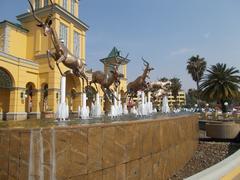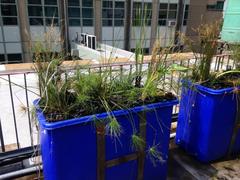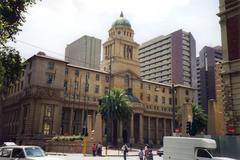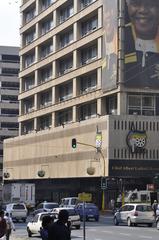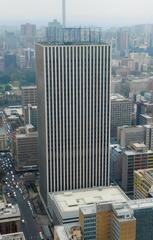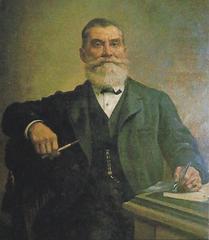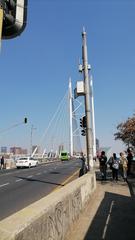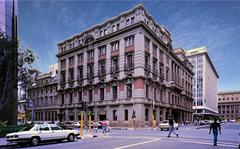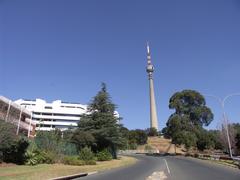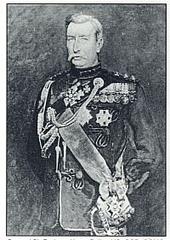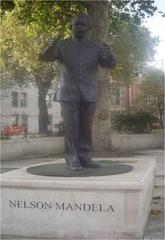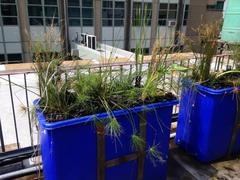Apartheid Museum Visiting Hours, Tickets, and Guide to Johannesburg Historical Sites
Date: 14/06/2025
The Apartheid Museum in Johannesburg stands as a profound reminder of South Africa’s struggle with institutionalized racial segregation and its journey toward democracy. As one of the country’s most important cultural landmarks, the museum offers a deeply immersive experience, inviting visitors to reflect on the injustices of apartheid and the resilience of those who fought for freedom. This guide provides comprehensive information on visiting hours, tickets, accessibility, and essential travel tips, as well as recommendations for exploring nearby historical sites in Johannesburg.
Why Visit the Apartheid Museum?
Established in 2001, the Apartheid Museum chronicles the rise and fall of apartheid through evocative architecture, thoughtfully curated exhibitions, and multimedia presentations. It serves both as a historical archive and a powerful space of remembrance, reconciliation, and hope. Visitors encounter personal testimonies, artifacts, and archival footage documenting apartheid’s origins, its societal impacts, and the heroic resistance that led to its end. Notable events such as the Sharpeville Massacre, Soweto Uprising, and Nelson Mandela’s release are highlighted, making the museum an essential destination for anyone seeking to understand South Africa’s past and its ongoing pursuit of justice and equality (Apartheid Museum, South Africa.net).
Location and Accessibility
- Address: Corner of Northern Parkway & Gold Reef Roads, Ormonde, Johannesburg, 2001, South Africa
- GPS: -26.235149, 27.908664
- Transport: Easily accessible by car, taxi, or ride-hailing service; ample on-site parking.
- [Accessibility: The museum is fully wheelchair accessible, featuring ramps, elevators, accessible restrooms, and assistance for visitors with disabilities (Avygeo).](#accessibility:-the-museum-is-fully-wheelchair-accessible,-featuring-ramps,-elevators,-accessible-restrooms,-and-assistance-for-visitors-with-disabilities-(avygeo).)
Opening Hours
- Daily: 09:00 – 17:00 (last admission at 16:00).
- Closed: Good Friday, Christmas Day, and New Year’s Day.
- Note: Hours may vary on public holidays and during special events; check the official website for updates.
Admission Fees and Ticketing
- Adults: R170 per person (Webtickets)
- Pensioners, students, scholars: R85 per person (valid ID required)
- Children: R85 per person; the museum is not recommended for children under 11 due to sensitive content (MoAfrika Tours)
- Purchase: Online via Webtickets or at Pick n Pay and Boxer stores. Major credit cards and digital payment options accepted.
Recommended Duration and Visit Planning
- Duration: Allocate 2–3 hours to fully explore the exhibitions and reflection spaces (MakeMyTrip).
- Tours: Self-guided visits are common, though local operators like MoAfrika Tours offer guided tours for enriched context.
- Best Time: Arrive early for a quieter experience and to allow yourself time for reflection.
Museum Architecture and Symbolism
The museum’s architecture, designed by GAPP Architects and Urban Designers, powerfully reflects South Africa’s journey from oppression to liberation (GAPP Architects). The building’s modernist style and use of raw materials—concrete, steel, brick—mirror the starkness of apartheid-era infrastructure. Visitors begin their experience by receiving a ticket labeled “White” or “Non-White,” a symbolic gesture that immediately immerses them in the realities of racial classification (South African Tourism).
Key Architectural Features
- Divided Entrances: Separate “White” and “Non-White” gates confront visitors with the system’s arbitrary segregation.
- Seven Pillars: Prominent concrete pillars at the entrance represent the constitutional values of democracy, equality, reconciliation, diversity, responsibility, respect, and freedom (MatieMedia).
- Journey from Darkness to Light: The museum’s layout guides visitors from narrow, dim corridors—evoking oppression—into brighter, more open spaces symbolizing hope and democracy.
- Integration with Landscape: Partially embedded in the earth, the structure references Johannesburg’s mining history and the underground resistance during apartheid.
Exhibitions and Visitor Experience
Permanent Exhibitions
- Pillars of the Constitution: Seven outdoor pillars set the tone for values central to post-apartheid South Africa (Apartheid Museum).
- Path of Racial Classification: Authentic identity documents, passbooks, and signage detail how apartheid policies governed daily life.
- Rise of Apartheid: Archival footage, propaganda, and personal stories trace apartheid from colonial roots to formalization in 1948.
- Life Under Apartheid: Immersive displays, including reconstructed township homes and prison cells, convey the lived experience.
- Resistance and Struggle: Artifacts and multimedia presentations cover pivotal events such as the Sharpeville Massacre, Soweto Uprising, and the role of the ANC and PAC.
- Road to Democracy: Exhibits document the transition, including Nelson Mandela’s release and the first democratic elections.
- Chamber of Nooses: A somber room with 131 nooses memorializes those executed under apartheid laws (History Hit).
Temporary and Special Exhibitions
The museum regularly hosts temporary exhibitions on social justice, human rights, and reconciliation. Check the official website for current offerings (Nkwazi Magazine).
Multimedia and Reflection Spaces
Listening stations, video installations, and tranquil garden spaces enhance the educational and emotional impact (Entrance Fee Apartheid Museum).
Visitor Facilities and Comfort
- Gift Shop: Offers books, souvenirs, and educational resources.
- Café: Serves light refreshments; more dining options available at nearby Gold Reef City.
- Restrooms: Clean and accessible throughout the complex.
- Lockers: Large bags are not permitted in exhibition areas; lockers are available.
- Photography: Permitted in most areas (flash and video may be restricted; follow signage).
- Safety: Security personnel and surveillance ensure a safe environment. Standard urban precautions advised.
Accessibility and Suitability
- Wheelchair Accessible: Ramps, elevators, and accessible restrooms provided.
- Children: Content is most suitable for older children (11+); parental discretion advised.
- Sensory Sensitivities: Some exhibits have loud audio and graphic imagery; visitors may wish to bring earplugs.
Nearby Historical Sites and Attractions
- Soweto: Home to Vilakazi Street (where both Nelson Mandela and Desmond Tutu lived) and the Hector Pieterson Museum, commemorating the Soweto Uprising (Johannesburg Lists).
- Gold Reef City: Adjacent theme park and heritage site (Trip.com).
- Constitution Hill: Historic site housing the Constitutional Court and former prison.
- FNB and Ellis Park Stadiums: Major sports venues nearby.
Practical Tips for Visitors
- Arrive Early: To avoid crowds and allow time for full exploration.
- Wear Comfortable Shoes: Expect significant walking.
- Bring ID: For student/pensioner discounts.
- Prepare Emotionally: Exhibits can be intense and moving.
- Review the Website: For temporary exhibits, events, and updated policies.
- Plan Transport: Especially if visiting late in the day.
Frequently Asked Questions (FAQ)
Q: What are the Apartheid Museum’s visiting hours?
A: Open daily from 09:00 to 17:00, last admission at 16:00.
Q: How much are tickets?
A: Adults: R170; students/seniors/children: R85 (with ID).
Q: Is the museum wheelchair accessible?
A: Yes, with ramps, elevators, and accessible restrooms.
Q: Can I take photos inside?
A: Yes, in most areas, but follow signage for restrictions.
Q: Are guided tours available?
A: Self-guided tours are standard, but local operators offer guided options.
Q: Is the museum suitable for children?
A: Not recommended for children under 11 due to graphic content.
Q: What other historical sites are nearby?
A: Soweto, Hector Pieterson Museum, Constitution Hill, Gold Reef City.
Contact Information
- Website: apartheidmuseum.org
- Phone: See official website
- Address: Corner of Northern Parkway & Gold Reef Roads, Ormonde, Johannesburg, 2001, South Africa
Summary
The Apartheid Museum offers a transformative experience for all visitors, combining powerful storytelling, compelling architecture, and authentic artifacts to illuminate South Africa’s journey from division to democracy. With detailed exhibitions, accessible facilities, and proximity to other important sites, it is a must-visit destination for anyone interested in human rights and modern history. Plan your visit by checking opening hours, purchasing tickets online, and exploring nearby Johannesburg historical attractions.
For further information, download the Audiala app for audio guides and updates, and follow the museum’s social media channels for news on exhibitions and events.
Sources and Official Links
- South Africa.net
- Apartheid Museum
- Entrance Fee Apartheid Museum
- Avygeo
- Plak.co.za
- Nkwazi Magazine
- History Hit
- Johannesburg Lists
- History Tools
- Webtickets
- MoAfrika Tours
- MakeMyTrip
- Trip.com
- GAPP Architects
- MatieMedia
- South African Tourism

